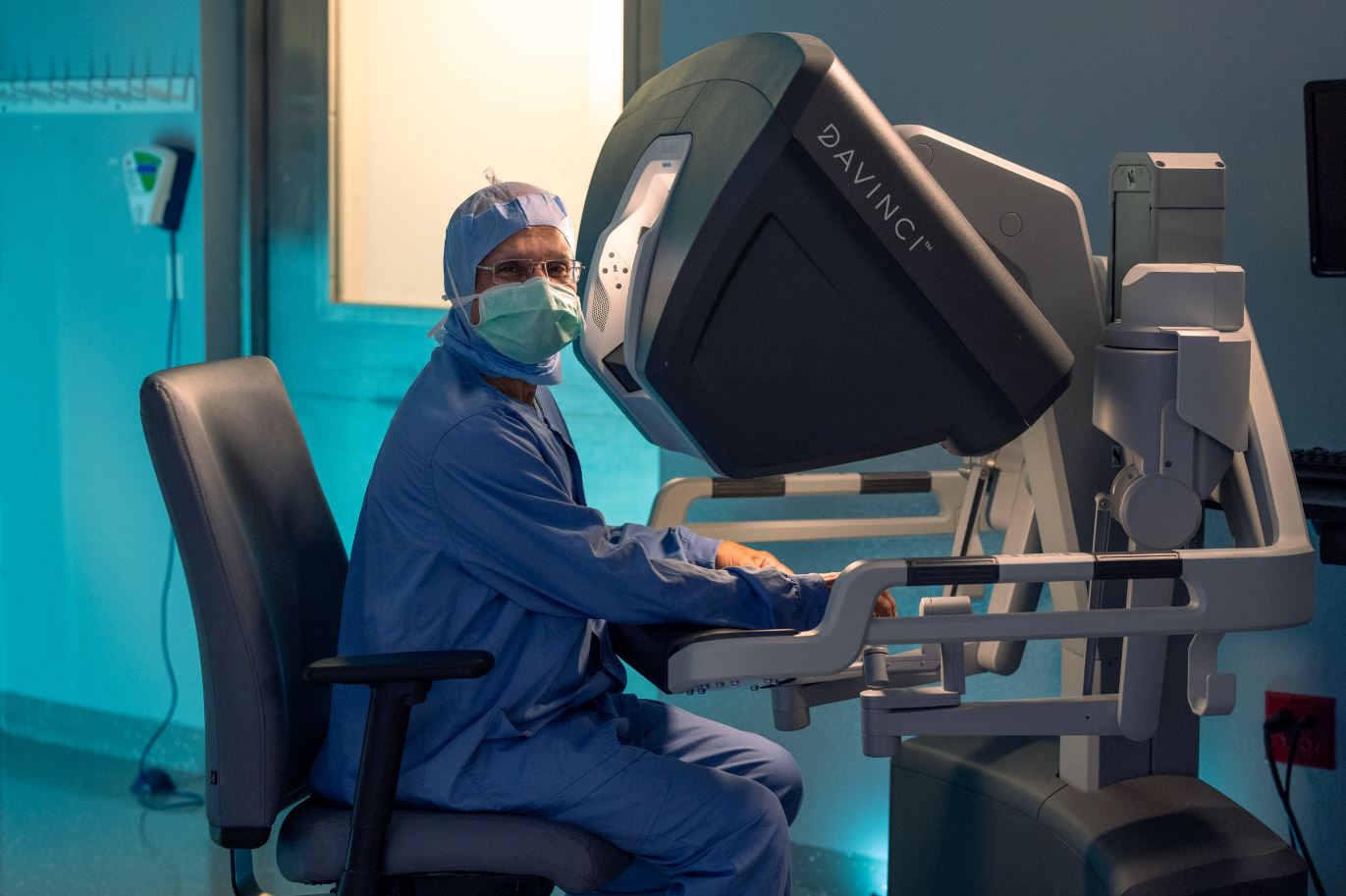da Vinci® Robotic Surgery
Compared to traditional open surgery, minimally invasive da Vinci® surgery offers numerous benefits, including a quicker, safer procedure, reduced recovery time, less pain, a lower risk of complications, and shorter hospital stays. Faster recovery means you can return to your daily life and the activities you enjoy sooner.
While often referred to as a robot, the da Vinci® Surgical System is actually a highly advanced tool controlled entirely by the surgeon. It provides 3D visualization, a full range of motion, and precise, intuitive control, enhancing the surgeon’s capabilities. With small incisions, the system improves technique by scaling motion and filtering tremors, allowing for extremely precise movements.
To operate the da Vinci®, the surgeon sits at a console separate from the patient and views a high-definition 3D image of the surgical field. Using hand controls, the surgeon guides the robotic instruments, which mimic and enhance the natural movements of the human hand. The robotic arms can rotate instruments more than 360 degrees, making minimally invasive procedures—such as those in cardiac, gynecological, and urological surgeries—more efficient and precise.
In 2025, St. Joseph’s Health welcomed the Intuitive da Vinci SP (Single Port) robotic surgical system, the latest advancement in our robotic-assisted surgery program.
Surgeons report that robot-assisted procedures are less invasive and more precise than traditional surgeries. This results in fewer complications, reduced pain, minimal blood loss, and faster recovery times, which translates into shorter hospital stays for patients.
St. Joseph’s Health Hospital was the first in Upstate New York to acquire and use the da Vinci® robotic surgical system in 2005, and continues to lead in advanced surgical care across a 16-county region.
Request An Appointment

